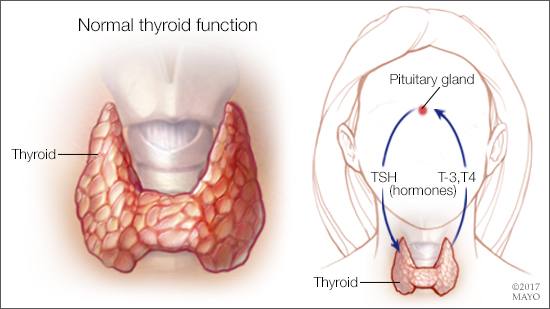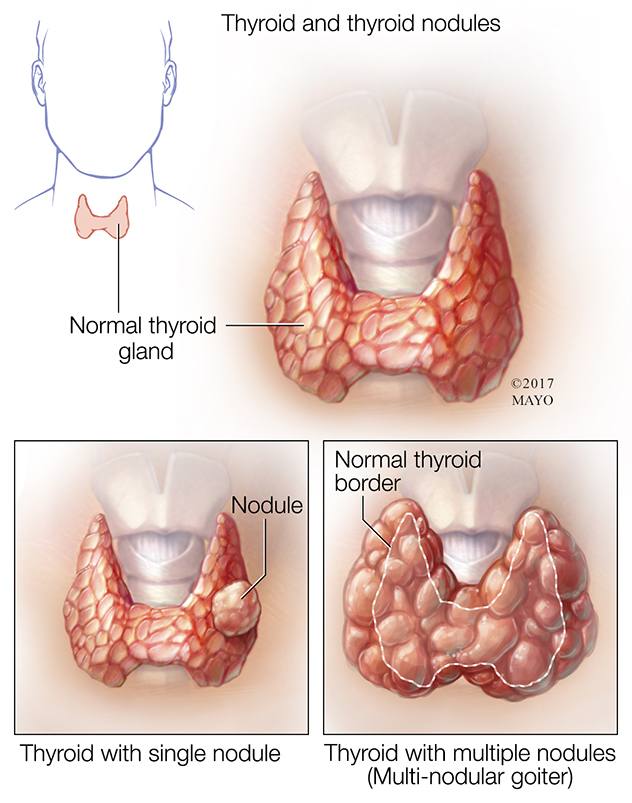-
Featured News
What is Hashimoto’s disease?

Your thyroid gland is a butterfly-shaped organ on the front of your neck. Its main function is to produce a thyroid hormone that regulates your metabolism. Hypothyroidism occurs when a person's thyroid function decreases. Hashimoto thyroditis, also known as Hashimoto’s disease, is the most common cause of hypothyroidism in the U.S.
“Hashimoto’s disease causes chronic inflammation of the thyroid, as antibodies form attacking your thyroid cells due to the changes to your immune mechanisms,” says Dr. Sakine Sever, a Mayo Clinic Health System endocrinologist.
Risk factors
Dr. Sever explains stress, infections, certain medications, and environmental and genetic factors are all thought to be triggers of Hashimoto’s disease. The affliction is also thought to be more common in females compared to males and is mostly seen between the ages of 30 and 50, with incidence increasing as you age.
Symptoms of Hashimoto’s disease
In some cases, people may not notice the signs or symptoms of Hashimoto’s disease, as thyroid function can be normal. In some rare cases, thyroid function may be increased. However, in most cases, a decrease in thyroid hormone production results in chronic inflammation. Dr. Sever says this can cause these symptoms:
- Fatigue
- Weight gain
- Constipation
- Dry skin
- Hair loss
- Cold intolerance
- Depression
- Menstrual irregularity
- Joint pain and muscle cramps
Problems associated with Hashimoto’s disease
“Enlargement of the thyroid gland, also known as a goiter, can happen in patients with Hashimoto’s disease,” says Dr. Sever. “Most of the time, the goiter doesn’t cause pain.”

Also, it’s not uncommon to see thyroid nodules or abnormal growth of thyroid cells forming lumps in patients with Hashimoto’s disease. When thyroid nodules or a goiter become big enough, other symptoms may occur, including:
- Swallowing difficulty
- Hoarseness
- Breathing problems
Why you should seek care
If you have any of the above symptoms, your health care provider may recommend you undergo a thyroid function testing and sometimes ultrasound to evaluate your thyroid gland and nodule size. In certain instances, a rapidly enlarging thyroid gland can be related to thyroid lymphoma, which is an uncommon, yet highly treatable form of thyroid cancer. Furthermore, Hashimoto’s disease also can be associated with other autoimmune disorders, such as:
- Type 1 diabetes
- Vitiligo
- Gluten sensitivity
- Rheumatoid arthritis
- Addison’s disease or pernicious anemia
Diagnosis
Generally, Hashimoto’s disease is diagnosed using laboratory testing. Decreased thyroid function and increased thyroid antibody levels (thyroid peroxidase and thyroglobulin antibodies) are usually adequate to establish a diagnosis.
Treatment
“Treatment for Hashimoto’s disease often consists of thyroid hormone replacement using a medication called levothyroxine,” adds Dr. Sever. “Levothyroxine is generally dosed based on the patient’s weight. It’s very important to make sure you follow directions while using medication of this nature, as it is recommended levothyroxine be taken on an empty stomach 30-60 minutes before eating.”
After starting on medication, thyroid hormone testing must be repeated in six to eight weeks for dose adjustment, with the goal of returning your thyroid hormone level to a normal range.
“Make sure to speak to your primary medical care provider if you have any questions,” says Dr. Sever. “They can provide answers to help keep you and your thyroid healthy.”







